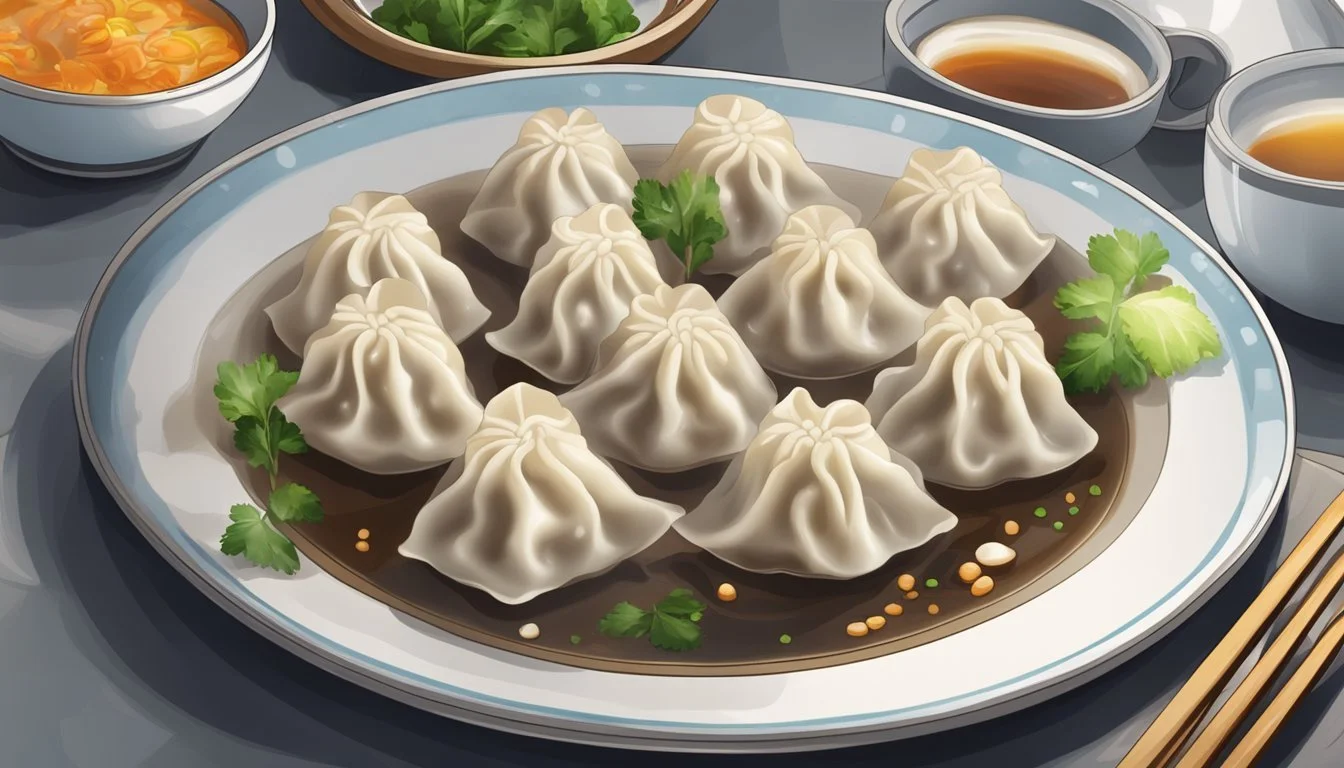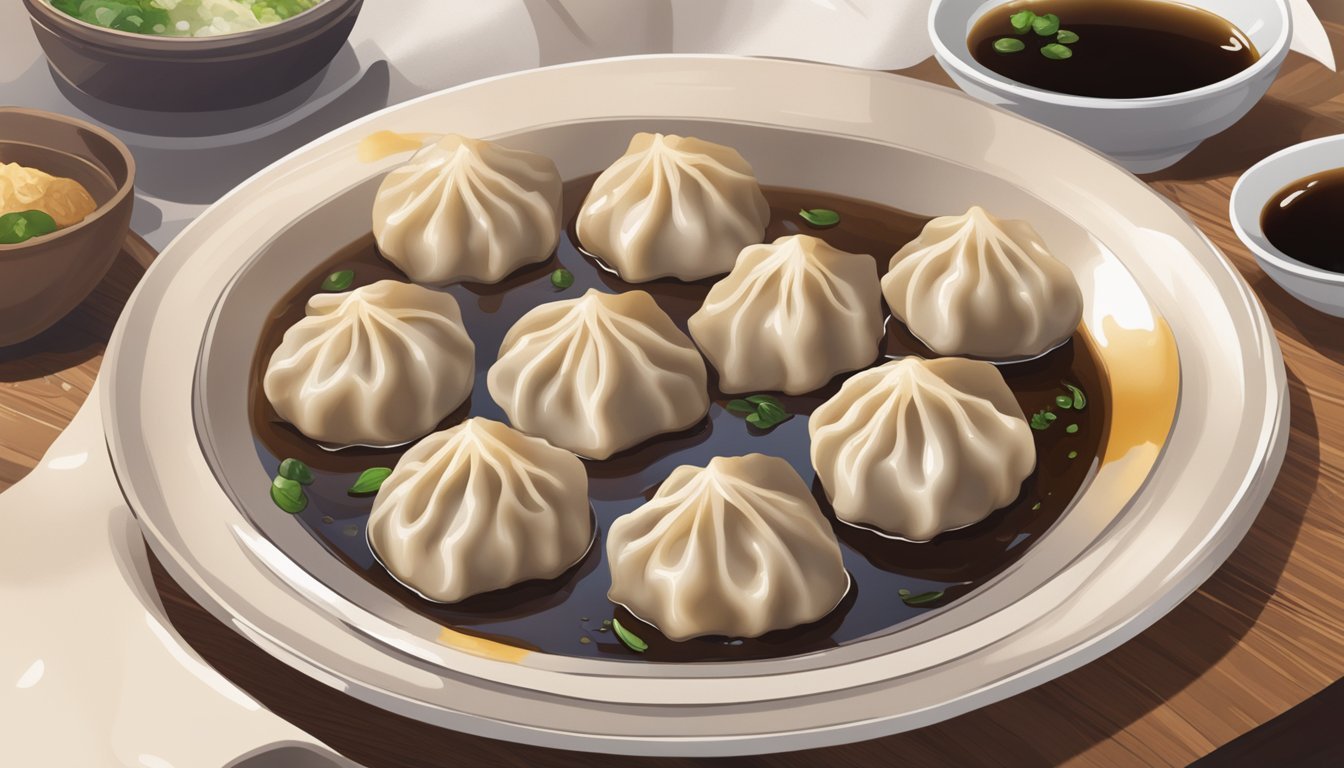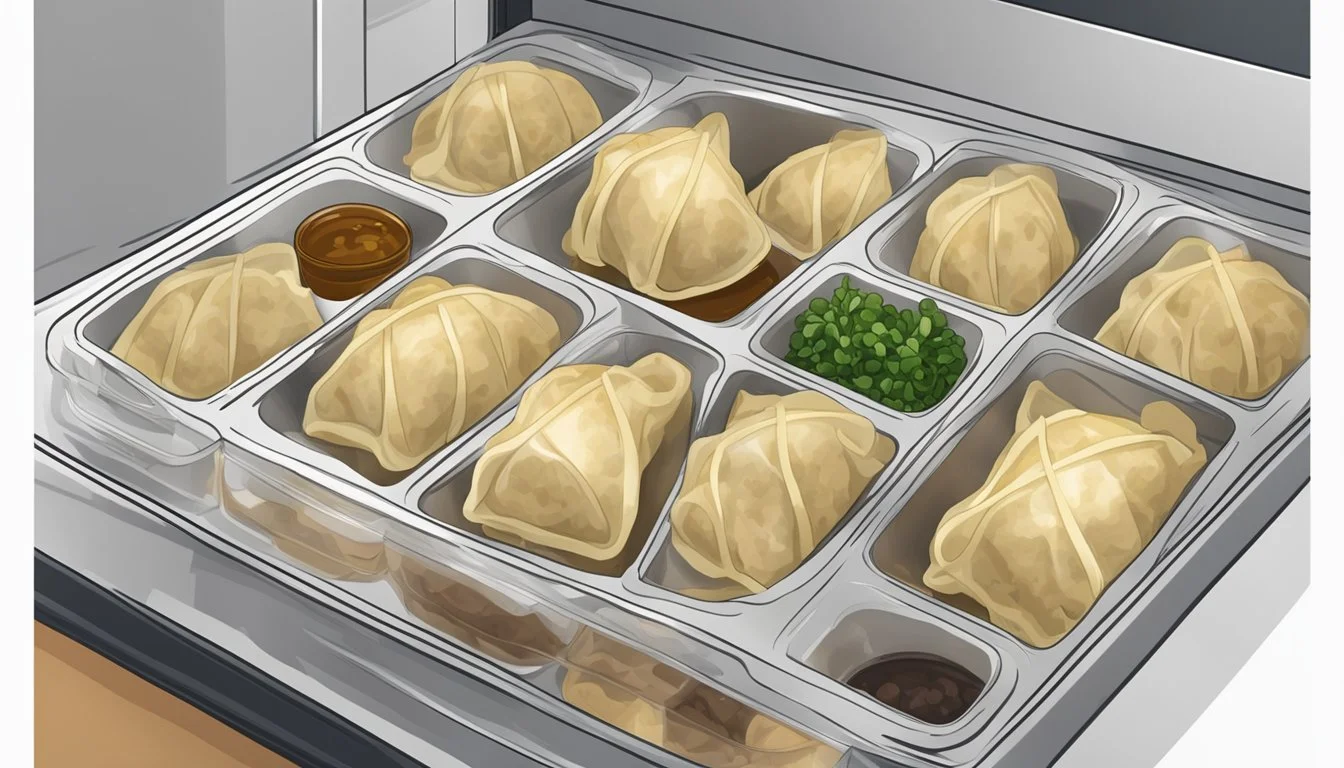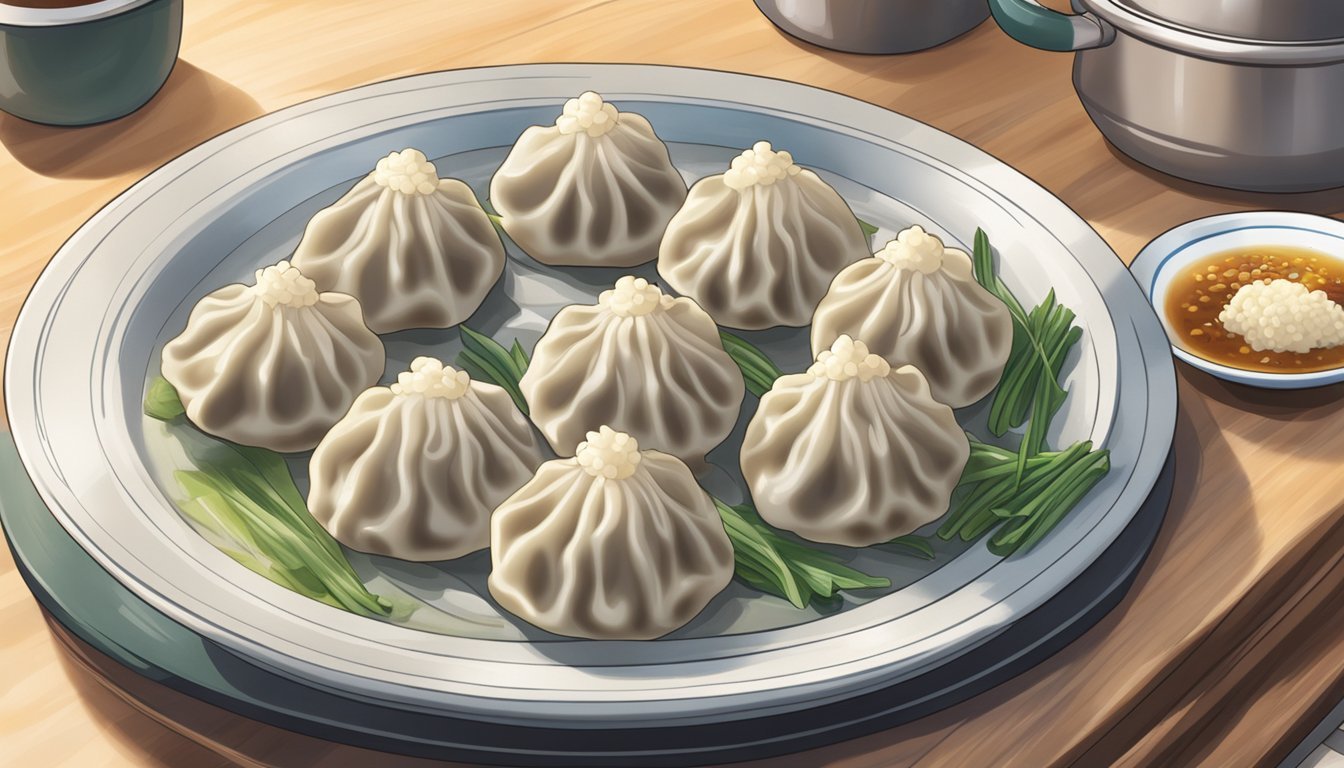How Long Do Beef Dumplings Last?
Storage Tips and Safety Guidelines
Properly stored dumplings can last for about 3 to 5 days in the refrigerator. This is essential for anyone who loves making or eating beef dumplings and wants to ensure they're safe and delicious.
Many people wonder how long their homemade or leftover dumplings will remain fresh, especially given the time and effort involved in making them. Understanding proper storage techniques can help preserve the flavor and texture, making your dumplings just as enjoyable days later.
By following a few simple steps, such as cooling dumplings completely before storing them in airtight containers, individuals can maximize the freshness and taste of their beef dumplings. This article will explore these practices in detail, providing practical advice for dumpling enthusiasts.
Understanding Beef Dumplings
Beef dumplings are a popular dish found in many culinary traditions. The essential components and the variety in preparation methods make them an interesting topic to explore.
Ingredients Breakdown
Dumplings are composed of a dough wrapper and a filling. For beef dumplings, the filling typically includes seasoned ground beef, onion, green onion, garlic, and ginger.
The dough for the wrapper is usually made from flour and water.
A simple filling can be made by mixing ground beef with minced onion, chopped green onion, pressed garlic, and grated ginger. Seasoning might include soy sauce, sesame oil, salt, and pepper.
The freshness of the ingredients is crucial for the best flavor and safety of the dish. Using fresh beef and vegetables ensures a more delicious result.
Dumpling Varieties
Beef dumplings can be prepared in various ways, offering different textures and flavors.
Steamed dumplings are placed in a steamer and cooked using steam. They come out soft and tender.
Boiled dumplings are cooked in boiling water, providing a smooth texture.
Fried dumplings, like pot stickers, are first browned in a pan with oil and then steamed until fully cooked.
Each method creates a unique experience. The choice between steaming, boiling, or frying often depends on personal preference or cultural practices. These methods can all be used to successfully cook beef dumplings while enhancing their distinct characteristics.
Making Beef Dumplings
Beef dumplings are a delightful blend of savory filling wrapped in delicate dough. The key steps in making them include creating the filling, preparing the dough, and assembling and cooking the dumplings.
Creating the Filling
The beef filling is the heart of the dumpling. Ground beef is typically mixed with finely chopped green onions, minced garlic, and ginger for depth of flavor. Soy sauce and sesame oil are essential, adding umami and richness. To enhance the texture, some recipes include finely shredded cabbage or carrots.
Season the beef mixture with salt and freshly ground pepper. Some variations might include a splash of rice wine or a pinch of five-spice powder for a more complex flavor profile. Mix everything thoroughly to ensure even distribution of ingredients.
Preparing Dumpling Dough
The dough for dumplings is simple but requires precision. Combine all-purpose flour with a pinch of salt in a large bowl. Gradually add water, mixing continuously, until the dough starts to form. The ideal texture should be smooth but slightly firm.
Knead the dough on a floured surface for about 10 minutes. Cover it with a damp cloth and let it rest for at least 30 minutes. This resting period is crucial as it relaxes the gluten, making the dough easier to roll out later.
Assembling and Cooking
Roll the dough into a long log and cut it into small, equal portions. Roll each portion into thin circles, creating the dumpling wrappers. Add a spoonful of filling to the center of each wrapper.
To fold dumplings, bring the edges together and pinch to seal. There are various folding techniques, but the goal is to ensure the dumplings are sealed tightly.
Cooking methods vary: Boiling involves cooking the dumplings in water until they float, which takes about 5-7 minutes. Steaming requires placing dumplings in a steamer basket over boiling water for around 15 minutes. Frying uses a nonstick pan with a bit of oil, adding water and covering to steam-fry for approximately 10 minutes until the bottom is crispy and the filling is thoroughly cooked.
With these careful steps, your homemade beef dumplings will have the perfect balance of flavors and textures.
Storing Dumplings
When storing beef dumplings, it's essential to know the best practices for both short-term and long-term storage. This ensures that they maintain their quality and are safe to eat.
Short-Term Storage
For short-term storage, place the dumplings in the refrigerator. Use an airtight container to prevent moisture loss and refrigerate them at a temperature between 32°F and 40°F (0°C and 4.4°C). This approach helps slow bacterial growth.
Refrigerated dumplings should be consumed within 2-3 days. Labeling and dating the container can help keep track of freshness. Make sure the fridge isn't overcrowded to allow proper airflow around the dumplings.
Long-Term Storage
Freezing dumplings is the best option for long-term storage. Firstly, arrange the dumplings in a single layer on a baking sheet lined with parchment paper. Ensure they do not touch each other to prevent sticking.
Freeze the dumplings until they are fully frozen (about 30 minutes to 3 hours). Once frozen, transfer them to freezer-safe bags or containers. Properly sealed, they can be stored for up to 3 months without significant loss of quality.
Label and date the containers. When ready to cook, dumplings can go straight from the freezer to boiling water or a steamer, requiring slightly longer cooking times.
Shelf Life and Food Safety
Beef dumplings need proper storage to ensure freshness and prevent foodborne illnesses. The lifespan varies by storage method and handling, affecting both quality and safety.
Refrigerator Lifespan
Refrigerated beef dumplings, whether homemade or store-bought, should be stored at 40°F (4.4°C) or below. They typically last 3 to 5 days in the refrigerator. It's crucial to place them in an airtight container to reduce exposure to air and moisture, which can lead to bacterial growth.
Handling tip: After cooking, allow beef dumplings to cool at room temperature for no more than 2 hours before refrigerating. Prompt cooling minimizes bacterial growth, preserving the dumplings' quality and safety.
Freezer Lifespan
To extend the shelf life of beef dumplings, freezing them is an effective method. Properly stored in a freezer set at 0°F (-18°C), beef dumplings can last up to 2 to 3 months without a significant loss in quality. Using vacuum-sealed bags or airtight containers is recommended to prevent freezer burn.
Preparation tip: When freezing, place dumplings in a single layer on a baking sheet before transferring them to containers. This prevents them from sticking together, making it easier to cook only the desired amount later.
Handling and Prevention
Proper handling is vital for food safety. Always start with fresh ingredients and follow safe preparation practices. Beef dumplings should be cooked thoroughly, reaching an internal temperature of 160°F (71°C) to ensure any harmful bacteria are killed.
Avoid cross-contamination by using separate cutting boards and utensils for raw and cooked foods. Wash hands and surfaces thoroughly to prevent the spread of bacteria. Store any leftovers promptly in an airtight container to maintain freshness and safety.
Key Points:
Refrigerate within 2 hours of cooking.
Freeze promptly to extend shelf life.
Cook to the proper temperature.
By following these guidelines, the shelf life and safety of beef dumplings can be maximized, ensuring a delicious and safe eating experience.
Serving and Pairing
Beef dumplings offer a versatile and flavorful dining experience, whether served as an appetizer or main dish. This section will guide you through pairing condiments and side dishes that complement their rich, savory taste.
Recommended Condiments
Dipping sauces elevate the taste of beef dumplings. Black vinegar brings a tangy and slightly sweet flavor that balances the dumplings' richness. A traditional dumpling sauce, combining light soy sauce, dark soy sauce, sesame oil, and a touch of sugar, offers a well-rounded taste.
For a spicier kick, a dip made with Sichuan peppercorns and chili oil is a favorite choice. Shaoxing wine can be added to the sauce to lend a deep, aromatic note.
When using dipping sauce, opt for small, individual bowls to maintain hygiene and enhance the dining experience.
Side Dishes
Pair beef dumplings with light and refreshing side dishes to balance their savory profile. Steamed or sautéed vegetables like carrots and celery add a crisp texture and natural sweetness. A simple cucumber salad with a soy sauce and vinegar dressing offers a fresh contrast.
For a heartier meal, serve the dumplings with a bowl of steamed white rice or fried rice mixed with vegetables. An egg drop soup also complements beef dumplings, providing a warm and comforting accompaniment.
Stir-fried noodles with garlic and spring onions offer yet another option, adding a chewy texture that pairs well with the tender dumplings.
Common Questions
When storing and reheating beef dumplings, there are several considerations to ensure they maintain their texture and flavor. Differences between homemade dumplings and store-bought versions also impact storage and preparation.
Reheating Beef Dumplings
Reheating beef dumplings can be done using various methods. Microwaving is quick but may affect the texture, making the dumplings soft rather than crispy.
Steaming is ideal for retaining moisture and flavor without significantly altering the texture. Place the dumplings in a steamer basket over boiling water for about 5-7 minutes.
Pan-frying in a nonstick skillet with a small amount of oil can help achieve a crisp texture. Heat the skillet over medium heat, add the dumplings, and cook for 2-3 minutes on each side until golden.
These methods help preserve the beef dumplings' quality.
Homemade Dumplings vs Store-Bought
Homemade beef dumplings often use fresh ingredients, affecting both flavor and texture. They may have a more personalized flavor profile and can be tailored to include various fillings like pork or vegetables.
Store-bought dumplings, on the other hand, are convenient and have a more consistent appearance and taste due to mass production. However, they may contain preservatives to extend shelf life, impacting flavor.
When storing, homemade dumplings typically last 3-5 days in the fridge. Store-bought frozen dumplings can last several months, but it's important to follow the package instructions for best results.
Homemade dumplings allow for more control over ingredients and preparation methods.
Conclusion
Proper storage is essential for extending the shelf life of beef dumplings.
Cooked dumplings can be stored in the refrigerator for 3 to 5 days. Ensure they are placed in an airtight container to maintain freshness.
If opting for freezing, beef dumplings can last up to 3 months. Place them on a baking sheet to freeze individually before transferring them to a zip-lock bag.
Storage Tips:
Cool cooked dumplings to room temperature before refrigerating.
Use airtight containers or zip-lock bags.
Reheating Tips:
For refrigerated dumplings, reheat by steaming or microwaving.
For frozen dumplings, cook directly from frozen—no need to thaw.







